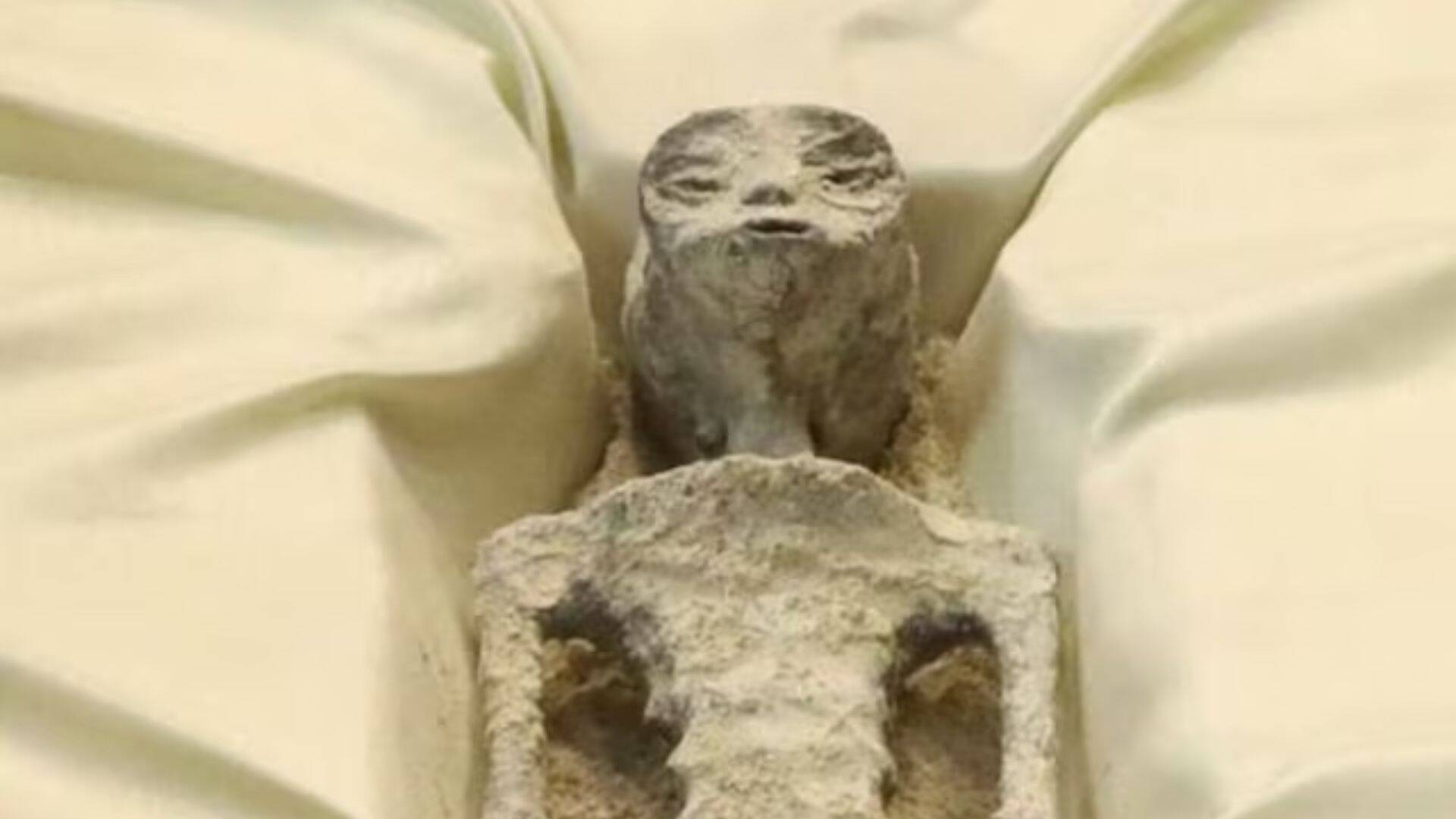A recent study has cast new light on the mystery of the ‘alien mummies,’ suggesting that these unusual corpses found in Nazca, Peru, are actually centuries old and of ‘Earthly origins’. Discovered by farmers in a cave in Nazca, Peru, these corpses, characterized by three fingers and three toes, have been the subject of intense debate since their discovery in 2017.
Researchers from St. Aloysius Gonzaga National University in Ica, Peru, have now claimed that these specimens bear similarities to humans, indicating that they are biological creatures. This assertion contrasts with earlier findings by forensic experts from Peru’s prosecutor’s office, who suggested that the objects found in the Nazca region were modern creations made from paper, glue, metal, and human and animal bones.
Flavio Estrada, a forensic archaeologist who led the initial analysis, concluded earlier this year that the objects were modern creations and not of extraterrestrial origin. He stated, “They are not extraterrestrial, they are not aliens,” noting that they were assembled with modern synthetic glue using animal bones from Earth.
The recent study from St. Aloysius Gonzaga National University in Ica highlights that these creatures lack eyes, have heads much larger than humans, and are approximately 1,700 years old. The study’s findings reveal, “Tomographic imaging analysis has shown that the specimen is a human-like body whose biological structures are similar to humans, but there are many differences such as lack of hair and ears, elongated skull and enlarged cranium which was found to be 30% larger than humans.”
If confirmed as a new human species, this discovery could have significant implications for biology, science, and socio-cultural history. The study suggests that these findings challenge long-held beliefs and could prompt a reevaluation of our understanding of human history. The scientific community’s response to these claims will be closely watched in the coming days.























